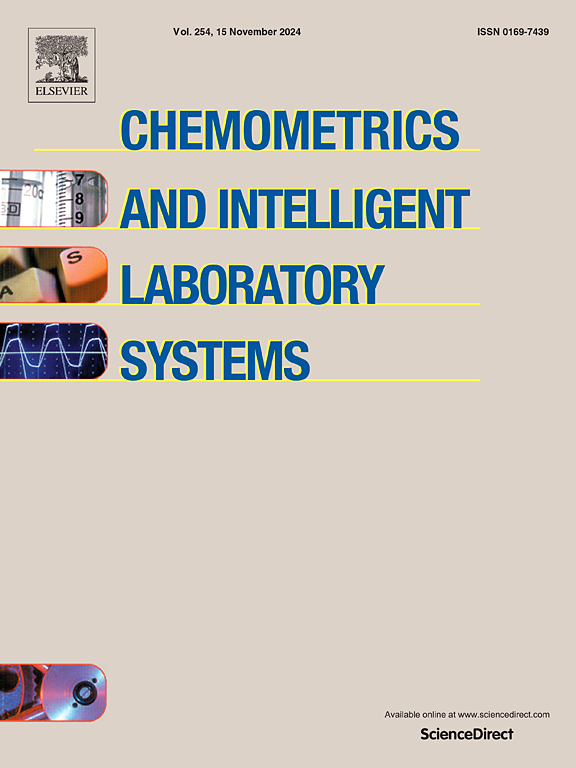GAINET: Enhancing drug–drug interaction predictions through graph neural networks and attention mechanisms
IF 3.7
2区 化学
Q2 AUTOMATION & CONTROL SYSTEMS
Chemometrics and Intelligent Laboratory Systems
Pub Date : 2025-02-13
DOI:10.1016/j.chemolab.2025.105337
引用次数: 0
Abstract
Drug–drug interactions (DDIs) are a significant challenge in modern healthcare, especially in polypharmacy, where patients are given more than one drug at the same time. Accurate prediction of DDIs plays an important role in reducing adverse effects and improving recovery in patients. In this study, we propose GAINET, a derivative of the graph-based neural network model enhanced with attention mechanisms, to accurately improve the prediction of drug–drug interactions. The model effectively learns interaction models by focusing on critical features in drug structures and their interactions with each other through molecular graph representations. For the performance evaluation of GAINET, which is trained on the DrugBank dataset containing 191,870 DDI examples, basic metrics such as AUC-ROC, F1 score, precision and recall are used. The obtained accuracy of 0.9050, F1 score of 0.9096 and AUC-ROC of 0.9505 indicate that GAINET outperforms many state-of-the-art models and has good generalization ability even on previously untested data. Moreover, the molecular attention mechanism enables interpretable predictions by highlighting the interaction-specific molecular substructures. All these findings indicate that GAINET, our proposed model for DDI prediction, can serve as a valuable and useful tool and advance the development of reliable pharmacological treatments.
通过图神经网络和注意机制增强药物-药物相互作用预测
药物-药物相互作用(ddi)是现代医疗保健中的一个重大挑战,特别是在多重用药中,患者同时服用多种药物。准确预测ddi对减少不良反应、提高患者康复具有重要作用。在这项研究中,我们提出了一种基于图的神经网络模型的衍生物,增强了注意机制,以准确地提高药物-药物相互作用的预测。该模型通过分子图表示来关注药物结构的关键特征以及它们之间的相互作用,从而有效地学习相互作用模型。GAINET是在包含191870个DDI样本的DrugBank数据集上训练的,对于性能评估,使用了AUC-ROC、F1分数、精度和召回率等基本指标。获得的准确率为0.9050,F1得分为0.9096,AUC-ROC为0.9505,表明GAINET优于许多最先进的模型,即使在以前未经测试的数据上也具有良好的泛化能力。此外,分子注意机制通过突出相互作用特异性分子亚结构实现可解释的预测。所有这些结果表明,我们提出的预测DDI的GAINET模型可以作为一个有价值和有用的工具,并推动可靠的药物治疗的发展。
本文章由计算机程序翻译,如有差异,请以英文原文为准。
求助全文
约1分钟内获得全文
求助全文
来源期刊
CiteScore
7.50
自引率
7.70%
发文量
169
审稿时长
3.4 months
期刊介绍:
Chemometrics and Intelligent Laboratory Systems publishes original research papers, short communications, reviews, tutorials and Original Software Publications reporting on development of novel statistical, mathematical, or computer techniques in Chemistry and related disciplines.
Chemometrics is the chemical discipline that uses mathematical and statistical methods to design or select optimal procedures and experiments, and to provide maximum chemical information by analysing chemical data.
The journal deals with the following topics:
1) Development of new statistical, mathematical and chemometrical methods for Chemistry and related fields (Environmental Chemistry, Biochemistry, Toxicology, System Biology, -Omics, etc.)
2) Novel applications of chemometrics to all branches of Chemistry and related fields (typical domains of interest are: process data analysis, experimental design, data mining, signal processing, supervised modelling, decision making, robust statistics, mixture analysis, multivariate calibration etc.) Routine applications of established chemometrical techniques will not be considered.
3) Development of new software that provides novel tools or truly advances the use of chemometrical methods.
4) Well characterized data sets to test performance for the new methods and software.
The journal complies with International Committee of Medical Journal Editors'' Uniform requirements for manuscripts.

 求助内容:
求助内容: 应助结果提醒方式:
应助结果提醒方式:


